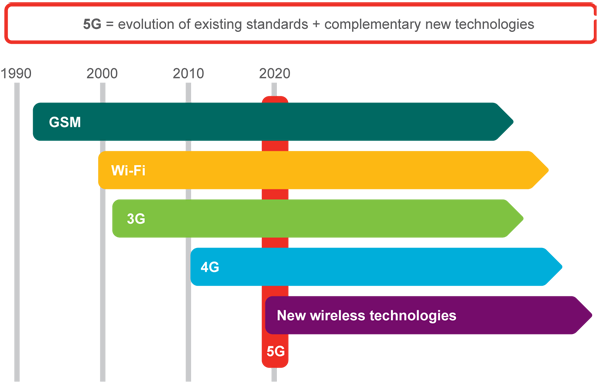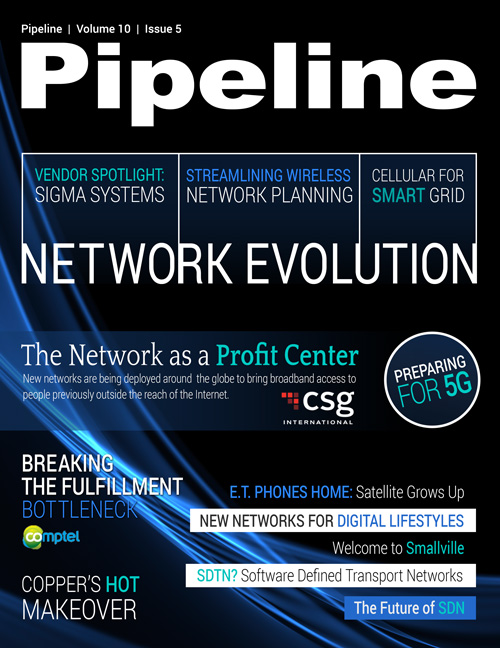5G and the Future of Wireless Networks
Some of the qualities of a 5G network include:
- mobile data rates of multiple gigabits per second;
- higher spectral efficiency and advanced beam-forming technology;
- a dramatic reduction in power consumption by both devices and macro- and microcell sites;
- latencies of less than five milliseconds end to end;
- a larger number of supported devices;
- pervasive coverage;
- extreme reliability;
- self-healing capabilities.
As you can see in figure 1 below, 5G will encompass both legacy transport as well as new technologies. (Interestingly, Wi-Fi has longer legs than 3G on this roadmap.)
Figure1:

Ericsson 5G Roadmap, 2013
One can also reverse engineer a 5G network based on the capabilities it will require by 2020, at which point Ericsson believes traffic volume will be more than 1,000 times the size it is now. To meet these needs, the company states in its June 2013 white paper “5G Radio Access” that “the 5G system will not be a single technology but rather a combination of integrated RATs [radio access technologies], including evolved versions of LTE and HSPA [high-speed packet access], as well as specialized RATs for specific use cases.”
5G work at Huawei
Whatever 5G becomes, new technology from Huawei will undoubtedly be a part of the equation. The company announced last year that it had seriously jacked up mobile speeds with its Beyond LTE technology, and we’re not talking a modest, incremental increase here: Beyond LTE promises to deliver a peak of 30 Gbps, which is 20 times faster than the top speeds of commercial LTE networks. Huawei’s technology relies on advanced antenna arrays, frequency management and MIMO (multiple-input, multiple-output) to improve spectrum utilization and achieve greater efficiency.
“Future technologies will bring revolutionary advances in network evolution—higher spectrum efficiency, wider spectrum aggregation and faster access rates,” said David Wang, president of Huawei’s wireless-network business unit, in a corporate news release. He boldly added, “Our Beyond LTE technology signifies the future of mobile broadband.”



















